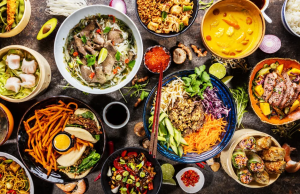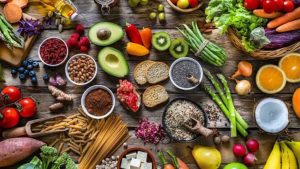
Introduction: Why Blueberries Are More Than Just a Tasty Treat
When you think of superfoods, chances are that blueberries come to mind—and for good reason. These tiny, vibrant fruits are more than just a delicious snack; they’re packed with powerful nutrients that offer a wide range of health benefits. Among the most impressive? Their ability to boost memory and brain health.
Research has shown that blueberries are especially rich in antioxidants, vitamins, and plant compounds that support mental sharpness, focus, and long-term brain function. Whether you’re a student looking to improve study performance or a senior wanting to preserve cognitive abilities, blueberries may be your brain’s best friend.
Let’s dive into the science behind why blueberries are considered a memory-boosting superfood and how you can add them to your diet in simple, tasty ways.
What Makes Blueberries a Superfood?
The term “superfood” refers to foods that are nutritionally dense and beneficial for health. Blueberries are loaded with:
- Vitamin C – Supports immune health and skin regeneration
- Vitamin K – Important for bone health
- Manganese – Aids metabolism and bone development
- Fiber – Helps digestion and keeps you full
- Antioxidants – Especially anthocyanins, which give blueberries their deep color and help fight oxidative stress
Among these nutrients, antioxidants are the real heroes for brain health. They protect the body’s cells—including brain cells—from damage caused by free radicals, which are harmful molecules that contribute to aging and disease.
How Blueberries Improve Brain Function and Memory
Blueberries have been linked to a range of cognitive benefits. Here’s how they can help your memory and mental performance:
1. Boosting Brain Signals
The flavonoids in blueberries, particularly anthocyanins, help improve communication between brain cells. This can enhance neuroplasticity, which is the brain’s ability to form new connections and adapt to new information—an essential function for learning and memory.
2. Reducing Brain Inflammation
Chronic inflammation in the brain has been linked to conditions like Alzheimer’s and dementia. The anti-inflammatory compounds in blueberries help reduce this risk, supporting long-term brain health.
3. Improving Blood Flow to the Brain
Better blood flow means more oxygen and nutrients reaching the brain. Blueberries help improve circulation, which can lead to better attention, quicker thinking, and more consistent memory performance.
4. Protecting Against Age-Related Decline
Several studies have shown that regular consumption of blueberries can slow down age-related memory loss and cognitive decline, keeping the mind sharp well into older age.
What the Research Says
Scientific research strongly supports the brain-boosting power of blueberries.
- A study from Harvard Medical School found that women who ate two or more servings of blueberries per week experienced slower rates of cognitive decline.
- Another study published in the Journal of Agricultural and Food Chemistry reported that elderly adults who drank blueberry juice daily for 12 weeks showed improved memory and learning abilities.
- Children who consumed a blueberry-based drink performed better on memory tests just a few hours after consuming it, according to a study in Nutrition Journal.
These results make it clear: blueberries are not just helpful for adults and seniors but also beneficial for kids and teens needing a mental boost.
Other Health Benefits of Blueberries
While brain health may be the star of the show, blueberries offer plenty of other health advantages:
- Heart Health: Blueberries help lower blood pressure and reduce bad cholesterol.
- Weight Management: Low in calories but high in nutrients and fiber, they keep you full longer.
- Blood Sugar Control: Their antioxidants improve insulin sensitivity and blood sugar levels.
- Skin Health: Their vitamin C helps in collagen production, keeping skin looking youthful.
Best Ways to Add Blueberries to Your Diet
Adding blueberries to your daily routine is easy and delicious. Here are some simple ideas:
1. Smoothies
Blend blueberries with banana, Greek yogurt, and almond milk for a brain-boosting breakfast.
2. Oatmeal Topping
Top your morning oats with fresh or frozen blueberries and a dash of cinnamon.
3. Salads
Toss blueberries into a spinach salad with walnuts and feta cheese for a sweet-savory twist.
4. Healthy Snacks
Freeze blueberries for a cold treat or mix them with almonds for a smart snack on the go.
5. Blueberry Tea or Infused Water
Crush a few blueberries into your water or steep them into tea for a refreshing and healthy beverage.
Fresh, Frozen, or Dried – What’s Best?
All forms of blueberries offer health benefits, but here are a few tips:
- Fresh blueberries are best for taste and texture.
- Frozen blueberries are often just as nutritious and perfect for smoothies.
- Dried blueberries are convenient but often contain added sugar—so check labels before buying.
Aim for a ½ to 1 cup per day of fresh or frozen blueberries to gain the full cognitive benefits.
Are There Any Side Effects?
Blueberries are generally safe for most people. However, if you’re on blood-thinning medication, it’s wise to speak to your doctor, as blueberries are high in vitamin K, which affects blood clotting.
Also, stick to moderate servings—too many blueberries in one sitting may cause stomach upset due to their fiber content.
Conclusion
Blueberries are more than a tasty fruit—they’re a powerful ally for your brain. From improving memory and boosting brain function to protecting against age-related decline, this little berry packs a big punch. Easy to add to your diet, low in calories, and full of flavor, blueberries are a superfood worth eating every day. By making them a regular part of your meals or snacks, you’re investing in better focus, sharper memory, and long-term mental wellness. So go ahead—enjoy a handful of blueberries today and fuel your brain the natural way.



































